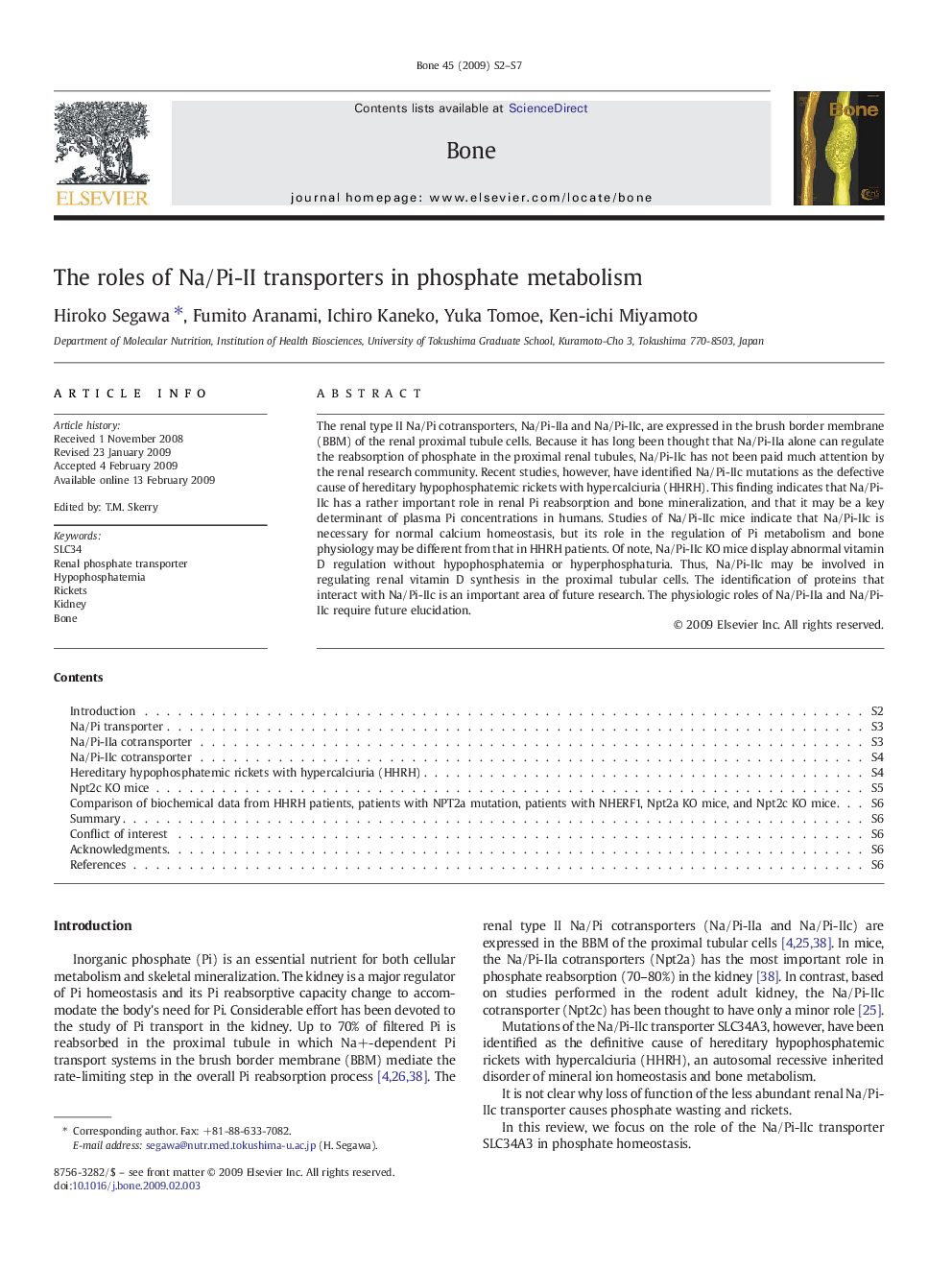| Article ID | Journal | Published Year | Pages | File Type |
|---|---|---|---|---|
| 2781517 | Bone | 2009 | 6 Pages |
The renal type II Na/Pi cotransporters, Na/Pi-IIa and Na/Pi-IIc, are expressed in the brush border membrane (BBM) of the renal proximal tubule cells. Because it has long been thought that Na/Pi-IIa alone can regulate the reabsorption of phosphate in the proximal renal tubules, Na/Pi-IIc has not been paid much attention by the renal research community. Recent studies, however, have identified Na/Pi-IIc mutations as the defective cause of hereditary hypophosphatemic rickets with hypercalciuria (HHRH). This finding indicates that Na/Pi-IIc has a rather important role in renal Pi reabsorption and bone mineralization, and that it may be a key determinant of plasma Pi concentrations in humans. Studies of Na/Pi-IIc mice indicate that Na/Pi-IIc is necessary for normal calcium homeostasis, but its role in the regulation of Pi metabolism and bone physiology may be different from that in HHRH patients. Of note, Na/Pi-IIc KO mice display abnormal vitamin D regulation without hypophosphatemia or hyperphosphaturia. Thus, Na/Pi-IIc may be involved in regulating renal vitamin D synthesis in the proximal tubular cells. The identification of proteins that interact with Na/Pi-IIc is an important area of future research. The physiologic roles of Na/Pi-IIa and Na/Pi-IIc require future elucidation.
